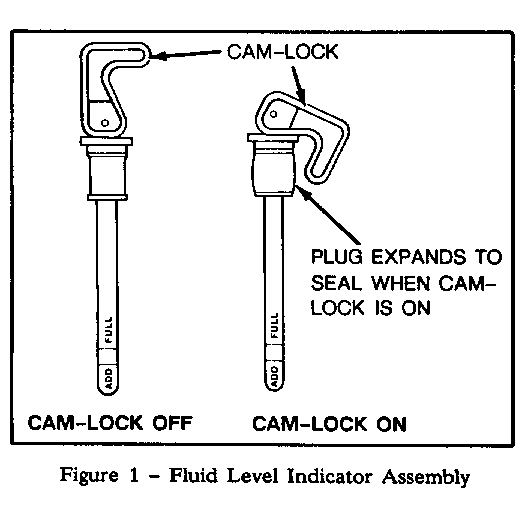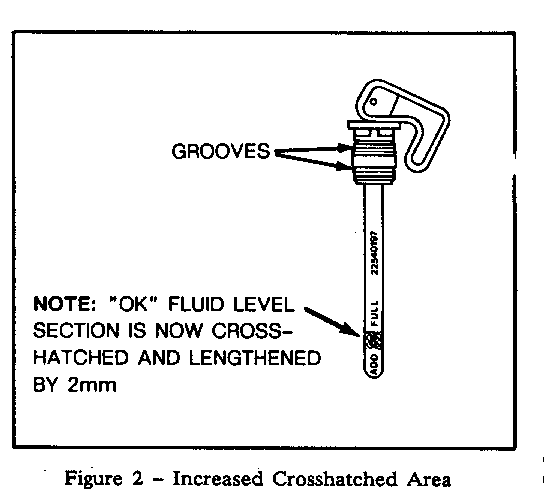FLUID LEAK FROM THE FLUID LEVEL INDICATOR ASSEMBLY BORE

TRANSMISSION APPLICATIONS: SUBJECT: ------------------------- ------- 1988 HM-282 MANUAL TRANSAXLE FLUID LEAK FROM THE FLUID LEVEL (RPO MG1 AND MG2) INDICATOR ASSEMBLY BORE
TRANSMISSION MODELS: VEHICLE APPLICATIONS: ------------------- -------------------- 1988 DAS, 8ZP, 8ZM, 8ZR, 1988 A, J, L, N AND P CARS 8ZN, ZZJ AND 8ZL
Bulletin Covers: (Figure 1) --------------- Some early 1988 A, J, L, N and P models equipped with an HM-282 manual transaxle (RPO MG1 and MG2) may experience a fluid leak from the indicator bore.
DATE OF PRODUCTION CHANGE:
An updated design fluid level indicator assembly is estimated to be used in production November, 1987.
SERVICE ACTION: (Figure 2) --------------- If this condition is encountered, try to pull out the indicator (with the cam-lock on). If the indicator pulls out install the updated design fluid level indicator assembly (estimated availability for service December, 1987). The updated design has four grooves in the plug to help "grab" on the bore. The new indicator will also have an expanded "OK" fluid level section that is crosshatched.
If the updated design indicator is not available then the fluid level indicator bore will have to be "roughed" up so the plug of the old design will "grab" on the bore. To service, perform the following procedure.
1. Release the cam-lock then remove fluid level indicator assembly.
2. Wipe indicator bore with Synchromesh Transmission Fluid (STF).
3. Put a new battery terminal brush (15mm (5/8 in.) minimum diameter) into the bore and rotate at least eight complete turns.
NOTICE: Use a NEW battery terminal brush--a used brush can leave corrosion and other foreign material inside the transaxle.
4. Remove battery terminal brush and clean bore with a clean cloth.
5. Install fluid level indicator assembly.
6. Check for proper fit by trying to pull out the indicator with the indicator cam-lock on.
- If the indicator can be pulled out, repeat the above procedure.
SERVICE PARTS INFORMATION:
Fluid Level Indicator Assembly (new design) GM P/N 22540197 Synchromesh Transmission Fluid (STF) GM P/N 12345349
SERVICE NOTES:
The MG282 is now referred to as the HM-282.


General Motors bulletins are intended for use by professional technicians, not a "do-it-yourselfer". They are written to inform those technicians of conditions that may occur on some vehicles, or to provide information that could assist in the proper service of a vehicle. Properly trained technicians have the equipment, tools, safety instructions and know-how to do a job properly and safely. If a condition is described, do not assume that the bulletin applies to your vehicle, or that your vehicle will have that condition. See a General Motors dealer servicing your brand of General Motors vehicle for information on whether your vehicle may benefit from the information.
